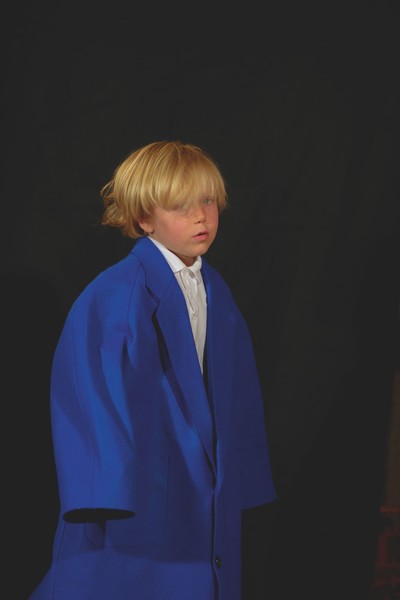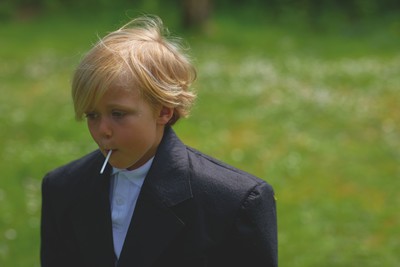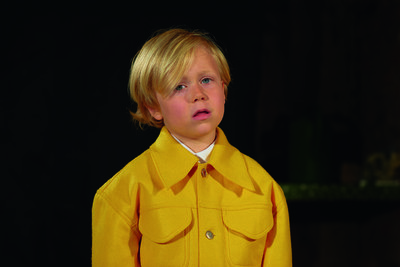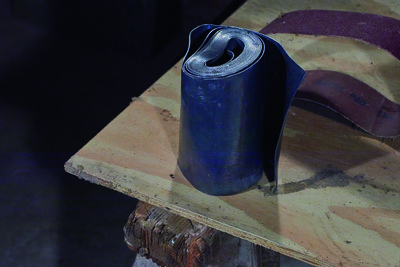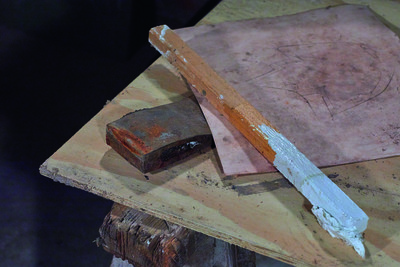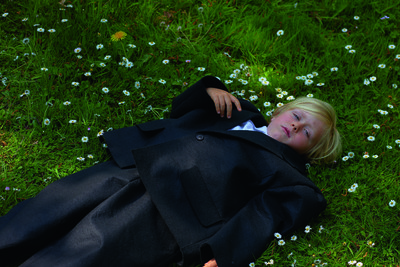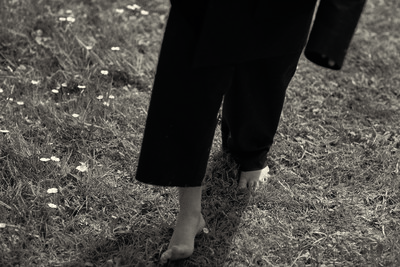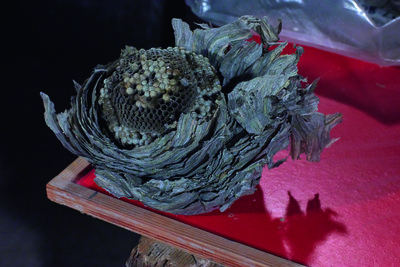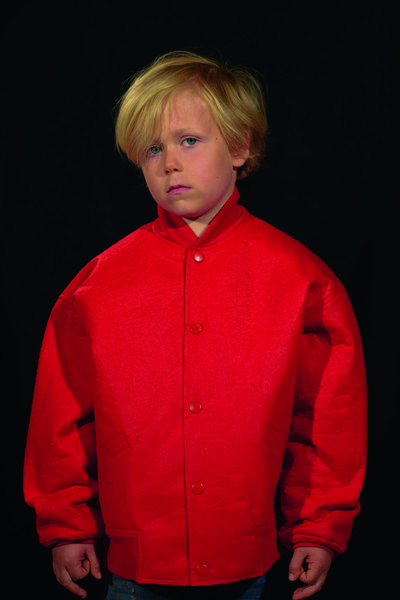In early April, we sent the following request to 17 leading art directors working in the fashion industry.
We’d love for you to conceptualize and deliver a fashion portfolio with your available means and from your current location. You would be entirely free to work with any partners, and to select any brand(s) you would like to feature in the portfolio. The exercise is one that innately addresses the current restrictions on collaborative work.
Just prior to sending out that message, we had asked ourselves a question that remains as bewildering today as it was when fashion’s capitals were first entering lockdown: in a world of Covid-19 restrictions, how can you create fashion imagery that often requires in-person collaboration, international travel, shipping clothes, and an often significant budget?
We decided to let the industry’s art directors work that question out for us. In doing so, commissioning a collective body of work that feels both adapted to this uniquely curious moment and which acts as a mirror to its creators. Each of the portfolios presented over the following pages reveals the personality, idiosyncrasies, background, working processes, address book, and creative impulses of the participating art director(s).
Interview by Thomas Lenthal
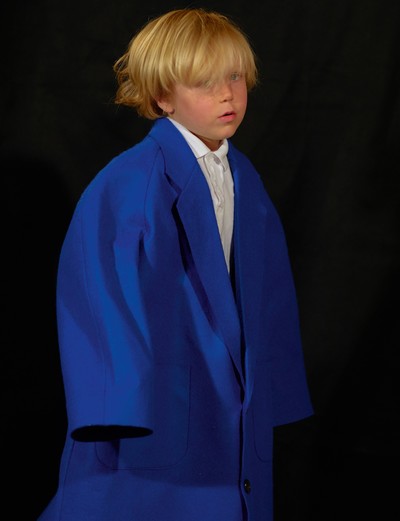
In early April, we sent the following request to 17 leading art directors working in the fashion industry.
We’d love for you to conceptualize and deliver a fashion portfolio with your available means and from your current location. You would be entirely free to work with any partners, and to select any brand(s) you would like to feature in the portfolio. The exercise is one that innately addresses the current restrictions on collaborative work.
Just prior to sending out that message, we had asked ourselves a question that remains as bewildering today as it was when fashion’s capitals were first entering lockdown: in a world of Covid-19 restrictions, how can you create fashion imagery that often requires in-person collaboration, international travel, shipping clothes, and an often significant budget?
We decided to let the industry’s art directors work that question out for us. In doing so, commissioning a collective body of work that feels both adapted to this uniquely curious moment and which acts as a mirror to its creators. Each of the portfolios presented over the following pages reveals the personality, idiosyncrasies, background, working processes, address book, and creative impulses of the participating art director(s).
‘I suppose there’s an element
of control to art direction – which is
probably why I ended up doing it!’
A conversation with Ben Kelway,
1 May 2020.
Thomas Lenthal: Thank you for this portfolio. Is that your son in the images?
Ben Kelway: No, it’s actually my nephew. I was going to use my son but he’s only two, so I think it would have been a nightmare. My nephew is six and he happens to be in isolation with us here in the country, so it worked out.
Thomas: Could you talk me through the portfolio and how it started?
Ben: When I got your email, I started to think about what a fashion portfolio meant or could mean. We’re in the countryside here in Wales, not in London, so we were faced with fairly limited means; I wasn’t sure if I could do anything. I called Tom Guinness, who I work with, and he thought it wouldn’t be possible to get any clothes. He said probably not, so I thought about the designers I collaborate with, Grace Wales Bonner and Craig Green, but then I remembered that you’d done fairly comprehensive stories with them, so I ruled them out. I also thought about approaching a photographer and doing something with a photographer remotely, but then, given the limited means, it seemed to make more sense to take the photos myself. I do bits of photography for magazines and I’ve done some things for Grace. I put my photos on Instagram, too, but they always bomb; they never get any further, which I actually take secret pleasure in. Then Tom suggested getting someone who makes clothes locally to run up some pieces; I liked that idea. We had talked about the clothes that are the cornerstones of a man’s wardrobe, and I like this idea of them being basic cartoonish shapes in primary colours. It’s basically what I wear: a denim jacket, a bomber jacket, an overcoat, a suit. Those are the basics of my wardrobe. I don’t know where the idea of making them all in the same fabric came from, but I like this kind of felt fabric, because it feels quite cartoony, a bit Sesame Street meets Joseph Beuys. We couldn’t find a local seamstress, so I ended up getting Ben, photographer Johnny Dufort’s brother, to do it. And that was that. For the images, we are in beautiful countryside here so I was a bit worried about making it too pastoral, especially with my nephew who is quite cute. I didn’t want it to look like a kids’ catalogue. So we set up a studio in one of the sheds and we shot a bit outside, too, as you can see. I liked the idea of shooting it in this black void, with this reduced idea of fashion. It felt like doing a fashion reset, with the idea of this kid looking to the future who is going to grow into the clothes. Something like that! I’m not sure how much I thought about the meaning in advance.
Thomas: The story looks excellent; it’s rich. In general, do you think that restriction itself is a useful or even necessary thing when it comes to creative work?
Ben: I think it is actually; I find it very helpful. The pictures I’ve usually done for magazines are the collections stories. Most people don’t want to do them, but I quite like the framework. You know, you’ve got to do something with that naff tracksuit and come up with a way of making it look good – I like that. And that’s what you have to do as an art director – you’re problem solving. I’m sure you’d agree. If you weren’t into doing that then I guess you would be an artist rather than an art director. I take as much pride in doing a really commercial job as something supposedly more creative. I’m not sure which one I enjoy more.
Thomas: Tell me, what constitutes a good image in your eyes and has that stayed the same throughout your career?
Ben: I always think that an image is good if someone has achieved what they set out to do and they are technically skilled enough in the studio to execute it correctly. Or it can be by someone whose style is much looser and whose intention is more about an edit. As anyone who knows me will tell you, I do have a bit of a problem with this younger generation of photographers who think it’s good use to film, but who don’t really know how to execute it. You can tell when it gets handed into the magazine – it’s milky thin, badly exposed. Jamie Hawkesworth knows how to do it, but there is a generation who don’t yet have the control to get what they set out to do. I don’t know, they like the element of chance in it.
‘I like the problem solving that comes with being an art director; like, coming up with a way of making that naff tracksuit look good.’
Thomas: I think they find it more soulful, but you can do that with a digital camera.
Ben: You know, if someone has the technical control to actually get the image, then even if I don’t like the style of the picture, I can admire it.
Thomas: Have you always reacted like that?
Ben: I’ve always been a fairly harsh critic. I suppose there’s an element of control – which is why I ended up doing this! Controlling a process and how an image or a project turns out.
Thomas: There’s a craft element to it.
Ben: I don’t know about other art directors’ processes, but I often feel responsible for a client. Like, here are your references, here is what it’s going to look like, here is what a realistic person could pull off within the budget. I sometimes feel some other art directors might say, ‘Let’s see what happens on the day. This kid seems cool, here you go, no problem.’
Thomas: Unfortunately, it’s no longer like that. It used to be. Those were our dancing days.
Ben: Maybe it’s just the time I’ve come up in, but I have always gone with these really rigid proposals: here are the references; here’s the mock-up; here it is on a phone and on video. Maybe I’ve made a cage for myself by presenting in that way.
Thomas: Was there a defining image, reference, moment or person from your teenage years that you now realize was instrumental in pushing you into fashion and more specifically, art direction?
Ben: It was definitely The Face; that was a turning point. I grew up in the north of England, so I wasn’t in London; I wasn’t in a big city.
Thomas: How old were you?
Ben: I’d say, 13; this was around 1990. There was The Face and i-D, but i-D was really London-centric, and as a 13-year-old up north The Face had a bit more of a global feel and was always very image led. I don’t know if there was one thing in particular. I remember seeing what David Sims was doing and thinking, ‘Ah, there’s a kid in that picture who looks like the kind of boy I might admire on the bus or school.’ Not in a sexy way. It was new to see that represented on a page in this revered location. I can’t forget that early Inez and Vinoodh work where they used Paintbox. I remember being quite blown away by it; it was so sick to see that in a magazine. There was that famous story where the model is kind of touching a kid; it’s so fucking weird. It was really subversive and there was power in how The Face mixed those signals on a page, the mix of the rougher stuff with the polished stuff.
Thomas: What do you find most intuitive in your work and what do you overthink?
Ben: That’s a good question. My judgement of my work is usually pretty intuitive. I look at it and ask if it feels exciting or progressive to me, or if I saw that someone else had done it, would I would be jealous? It’s that sort of gut feeling. I am not a trained graphic designer – my background is more in pictures – so I have to work with a designer or technician. I don’t know the rules of graphic design, so a lot of my decisions are quite intuitive; the designers will quite often say, ‘Oh you can’t do that, it’s not the Swiss school of whatever.’
Thomas: And what do you overthink?
Ben: Everything, I think! Because the gut instinct only lasts for a minute and then it gets overthought and diluted and drawn out. I think I’m probably quite hard to work for because I can go round-the-houses a bit, and tweak and change. I wish I could be a bit more, ‘Oh, that’ll do, that won’t make any difference.’
Thomas: Did you always try to be different, even as a child?
Ben: I did, if I’m honest. When I was very young, we moved around a lot and I changed schools quite a lot, and my parents divorced. There was a lot of change, so I suppose by the time I started school I felt I was quite different, partly because my dad wasn’t around for a while, and then I had a different dad and that was unusual. I remember a turning point when I realized that different was cool and decided to make it into a positive, a strength. It felt like there was a bonus to being different and to being an outsider.
Thomas: Which person in the fashion industry do you most admire?
‘A lot of my decisions are quite intuitive; the designers will quite often say, ‘Oh you can’t do that, it’s not the Swiss school of whatever.’’
Ben: Gosh, that’s a hard question! I don’t know. I worked for David Sims for about eight years, but I don’t want to say him because he gets enough praise and accolades! [Laughs] He had a big influence on me. I was kind of an assistant and then I oversaw all his post-production, retouching stuff. Then I started to do research and some layouts and stuff in-house. Then there were some stranger projects we used to do, like I sort of developed and styled some of that early weird Homme+ stuff he was doing. I don’t want to say him though! Who shall I say? Someone uncompromising who didn’t worry about money too much. Wait! Can I say David Bowie? Bowie in the 1970s – that was pretty tight as a body of work. It goes off in the 1980s, but there was a whole gamut of stuff there; it existed way outside of music. That was good. David Bowie then – he’s a kind of fashion icon, too.
Thomas: What does success look like to you?
Ben: Success constantly shifts. If when I was younger I had seen myself now, I would have thought that I was extremely successful. Certainly when I was a kid, I would never have dreamed of this level of success. Just having a job that I liked, never mind a career I liked. But as you get older, the goalposts keep shifting. Doing work that you mostly enjoy and then mostly enjoying the process, that feels like success. I’m fairly comfortable financially, everyone would always like a bit more financially, but this seems like a pretty good balance.
Thomas: What do you now know about the fashion industry that you didn’t know when you first started?
Ben: It has changed so much since I entered the industry; it’s a whole different thing. When I first entered the industry, I was very unsure about whether I would be accepted and if I could fit in. It all seemed quite elusive to me, but very quickly I was surrounded by relatively like-minded people. Despite how it might seem from the outside, it is actually very welcoming. It takes in a lot of different people with different outlooks and backgrounds, and that surprised me. It is not as elitist as it looks; instead, there’s this work ethic that brings people together and I have constantly found that a positive. Friends or peers work in advertising or film, and those industries actually seem a lot less welcoming.
Thomas: Were you expecting fashion to be a lot haughtier than it is?
Ben: I’m not sure. I was just really interested in images and their power. I suppose that I thought that fashion would be a good vehicle for the kinds of communications that I found interesting. I wasn’t really interested in couture or high-heeled shoes, that side of things, which made me slightly feel like I’d be found out and that would be the undoing of me. But then I realized that often the people who come into fashion almost by accident and have these other rich areas of interest kind of make the best fashion work, even maybe some designers. For photographers, if you’ve only studied fashion photography and that is your library, then it can perhaps become a bit of a stale pool…
Thomas: Apart from Meisel.
Ben: He almost has his own language.
Thomas: As things gradually return to some level of normality, will your impulse be to explore fantasy and escapism or to double down on realism and documenting the moment?
Ben: Escapism and fantasy! I just did this big presentation for a brand that is traditionally more in that world and we talked about this quite a lot. I was saying that I just think people are going to want to watch escapist things. There is only a certain amount of real documentary-worthy stuff. I spoke to the client on the phone and said that everyone stuck at home isn’t just watching the news the whole time; they’re also watching RuPaul’s Drag Race – and I think there’ll be an appetite for more of that. You know what it’s like, it’s a swinging pendulum between the fantasy and the reality. The celebrity thing might take a bit of a hit, though. That might be less relevant. Maybe we’ll get celebrity realism – now that would be a really horrible combination of things!
Thomas: Are there any of the lockdown changes that you still might appreciate when things start to subside or are you itching to get straight back to pre-Covid-19 processes? Do you miss the notion of ‘Let’s go to New York to shoot this, and we’ll be a crowd of 50 people on the set!’ That has become normal over the past 20 years. Do you want to go back to that?
Ben: I think it would be a shame to be really limited all of a sudden, because I doubt anyone’s going to look at the final product and think, ‘Oh, that’s a bit crap, but I guess they only had a couple of people on set, so that’s the best they could do!’ People are still going to judge the work in the same way.
‘Sometimes I have jobs with four teams working simultaneously – main shoot, still lifes, video, behind-the-scenes – and you’re spinning all these plates.’
Thomas: In the 1950s and 1960s the models would do their own make-up on those Avedon photos, and those images are still incredible.
Ben: Funnily enough, I recently did a job that was on a scale I hadn’t experienced for a while. We had two huge film studios, one for the video and one for stills, and it was just bonkers. It was like an entire village. I had my own area and it was bigger than my apartment; it had its own sofa and Diptych candle. I’m not even sure it made for good work. I won’t miss that. I’m actually more interested to know how it will affect deliverables. Projects, certainly from my point of view, had really become stretched. Sometimes I have these jobs going where there are four teams working at the same time – a main shoot, still lifes, video, a behind-the-scenes – and you’re spinning all these plates. I don’t know why that level of deliverables would change, but people are talking as if it will, as if people’s appetites will undergo a reset. I don’t know if they will, though. Clients aren’t going to stump up more money to have more days to shoot. Some brands might wish to appear more refined and less attainable and so might delve into other ways of doing things. I believe very much in the return of paper: a catalogue is more considered, precious and luxurious than any Instagram post. Even a digital version of a catalogue is better than an Instagram swipe. But then I still struggle not to think of pictures as two pages – what happens if you put this next to this – which is probably why I like doing magazines. A lot of my work is often about some sort of clash, with one thing only good because it is next to this one. I often solve a problem by taking one boring thing and putting it next to something else – and the whole thing immediately becomes interesting. In the portfolio, there are still lifes of junk and bits of tools and horrible, rusty things we found in the barn…
Thomas: There’s a cabbage.
Ben: It’s actually a wasp nest.
Thomas: A wasp nest? It’s beautiful.
Ben: It is, isn’t it? That was in the little barn where we set up the studio. There is also some lead. Again this is that exaggerated version of masculinity that I sat next to these brightly coloured clothes. I did the still lifes because I was worried about the kid’s pictures being too cute, so I like the idea of them sitting next to these brutal bits. It’s quite Joseph Beuys; sinister and dark. Scary, adult, dangerous and dirty against the kid’s clothes.
Thomas: It’s really arresting, and a great fashion portfolio. With or without the context, it’s a brilliant story in any magazine.
Ben: Oh good, I’m glad you like it!
Thomas: As you said, it’s not always easy to understand where creative directors are coming from and why they do what they do and how, so these kinds of conversations are always really interesting.
Ben: I often think that an art director is like a music producer and the photographer is like the musician, you know what I mean? The producer can work with all these different musicians and create all these different ways of working, while the photographer often just does their thing.
Thomas: That’s an interesting analogy.
Ben: You can use it!
